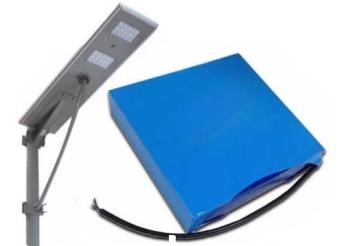A very frequent question of our clients is about the battery capacity of solar-powered LED lamps. Obviously, a suitable battery capacity needs to match with the daily engery consumption of the lighting source. Taking the example of a 100 Watt LED street lamp, the following simple 3-step calculation allows us to determine the suitable battery capacity.
Step 1: determination of the daily engergy consumption
If a 100 Watt LED street lamp runs for example 8 hours dailz, this results in a total energy consumption of 800 Watt-Hours per day (8 hrs x 100 Watt).
Step 2: consideration of efficiency losses
Solar systems have efficiency losses due to factors such as charge/discharge losses, inverter losses, losses in the wiring, losses in the solar panel and battery itself. As an rough thumb of rue it can be said that these losses range from about 15% to 30%, with an average rate of 20%. Considering this energy loss of 20%, it is safe to say that our above-calculated energy consumption of 800 Watt-Hours should be increased by 20%, hence to 1000 Watt-Hours.
Step 3: determination of the battery capacity:
The final battery capacity depends on how much autonomy is requested. Autonomy in that sense means the time the 100 Watt solar LED street lamp can be run without sunshine. A typically requested autonomy for LED street lamps is two days which leads us to the following calculation: 1000 Watt-Hours x 2 days = battery capacity of 2000 Watt-Hours. The street lamp can run two full days 8 hours each day without any sun at with this capacity. To transfer this value into the more common Ampere-Hours, we divide 2000 Watt hours by a typical LED street lamp Voltage of 18 VDC which results in a battery capacity of 166 Ampere-Hours.


